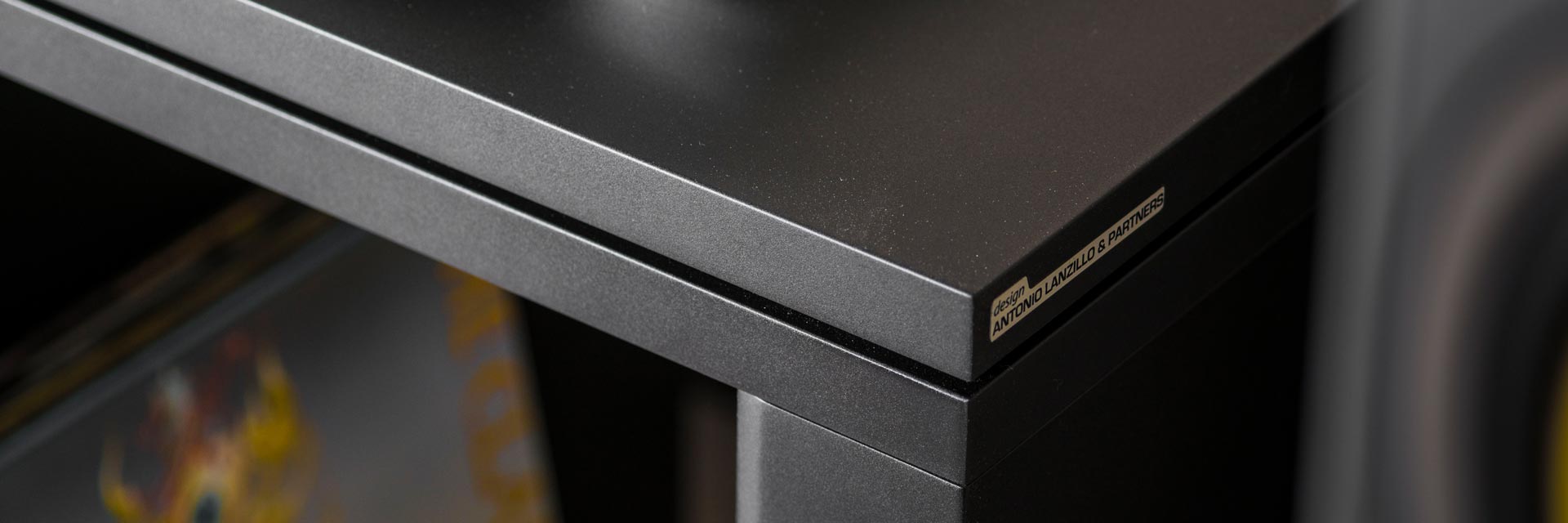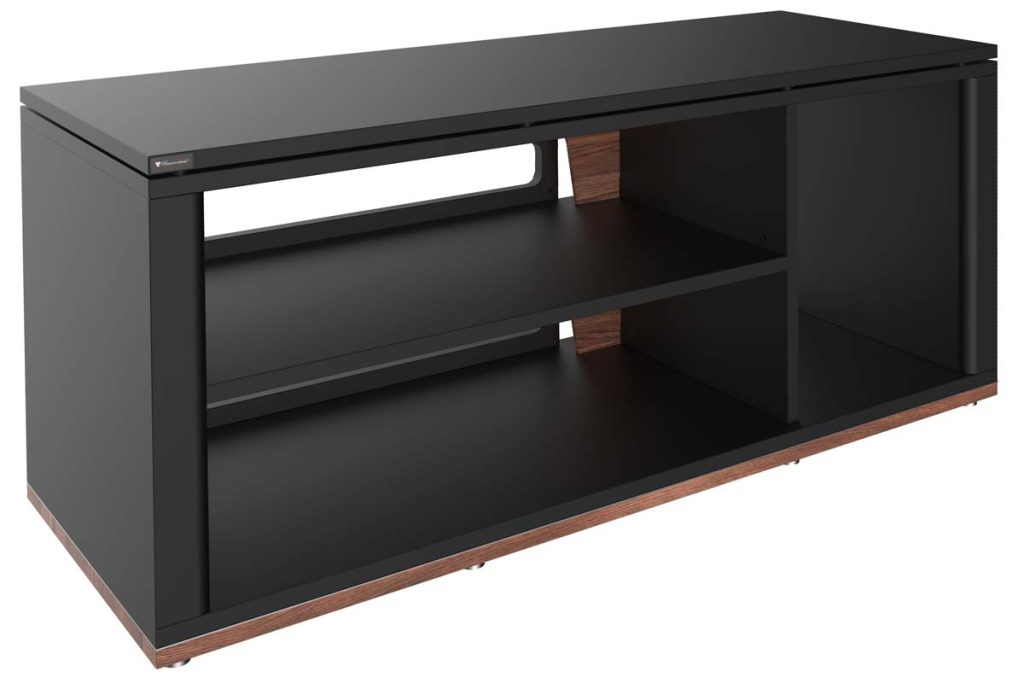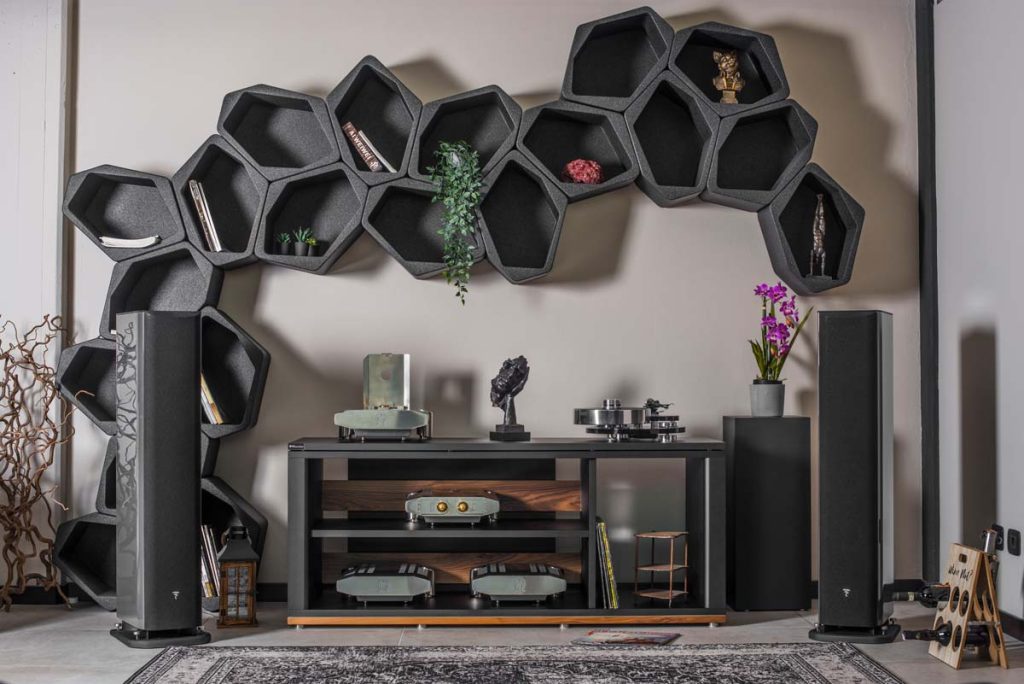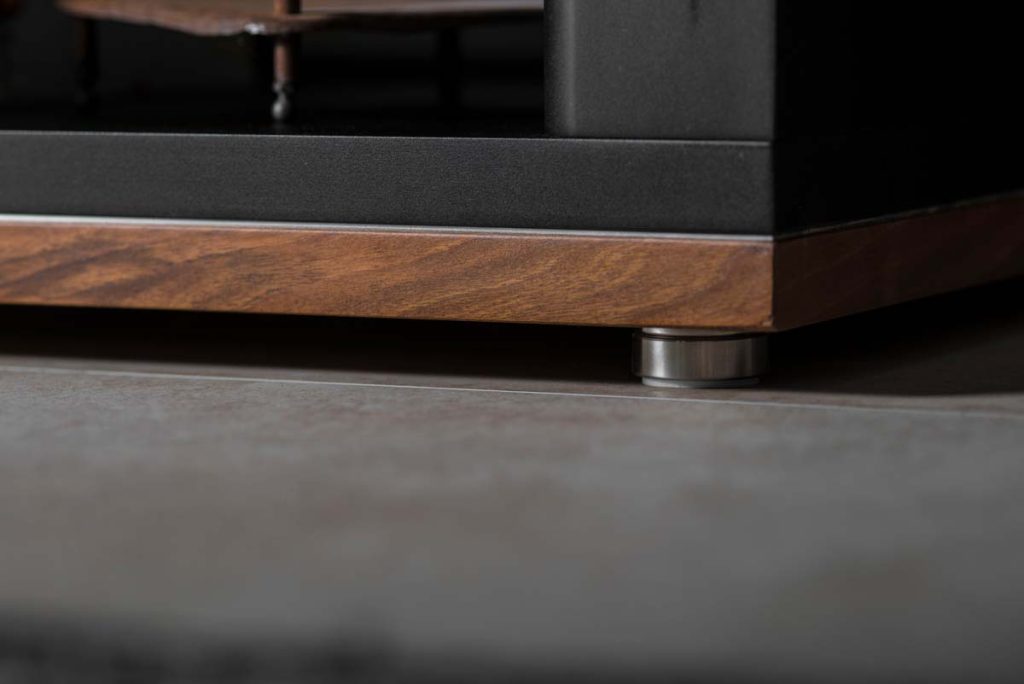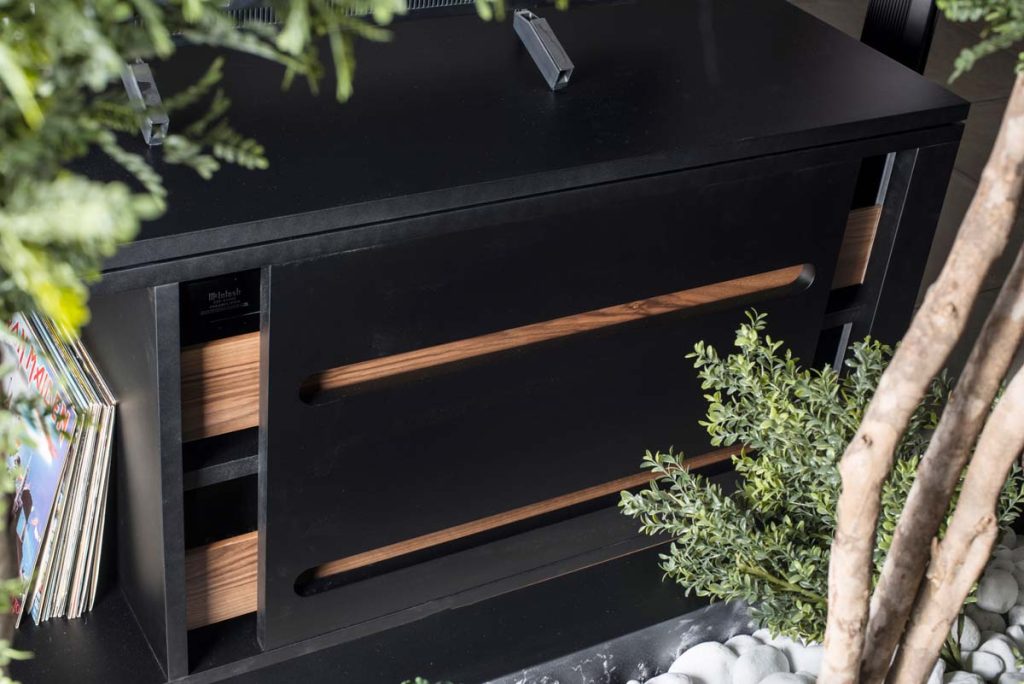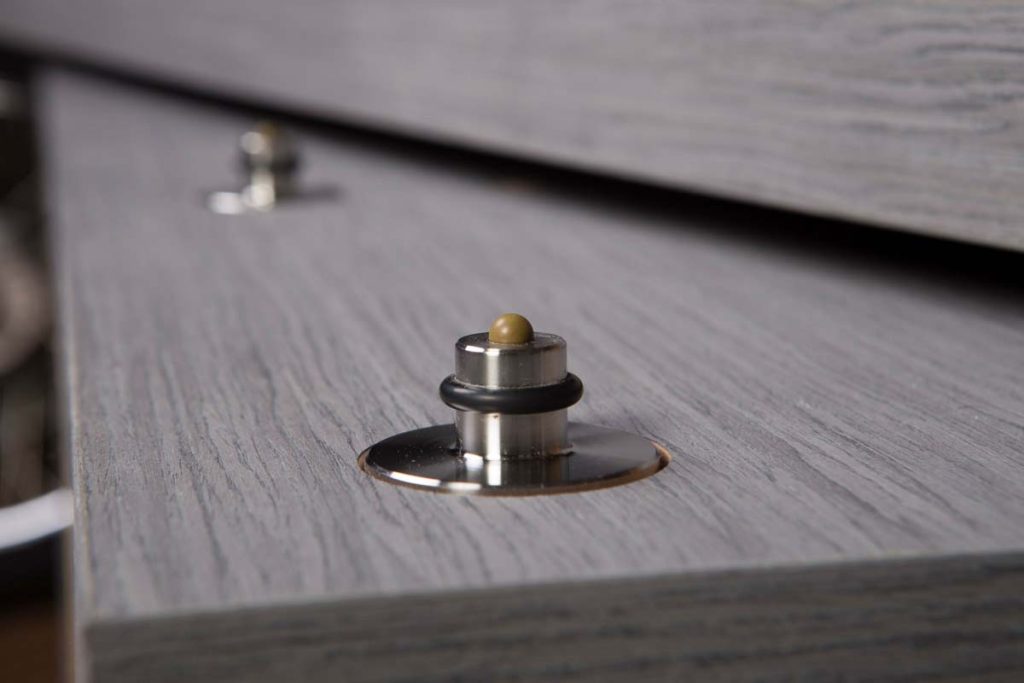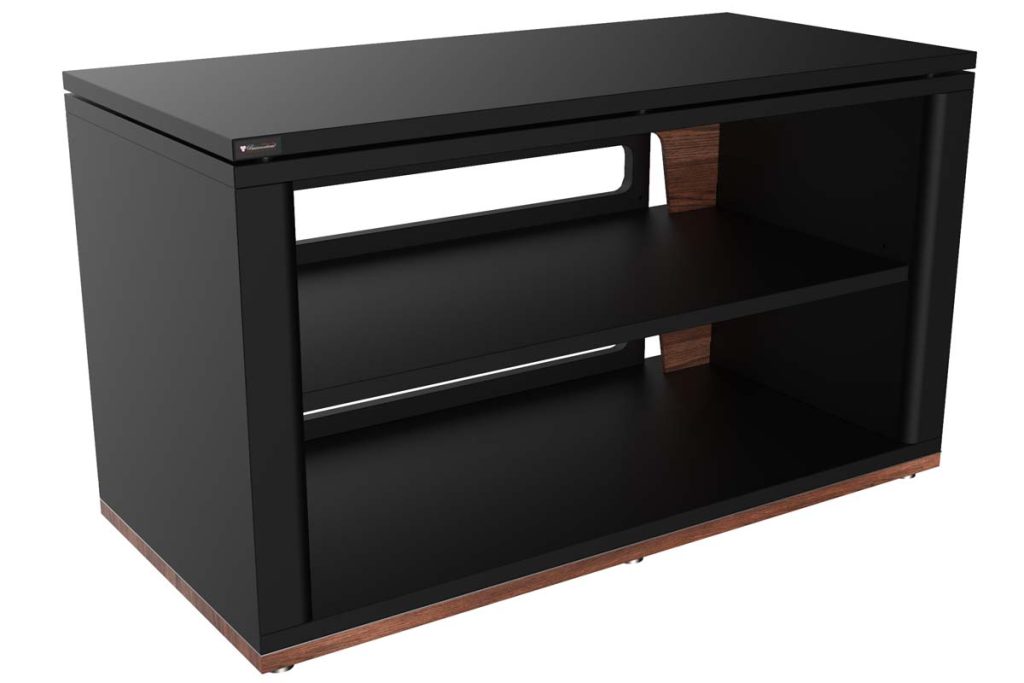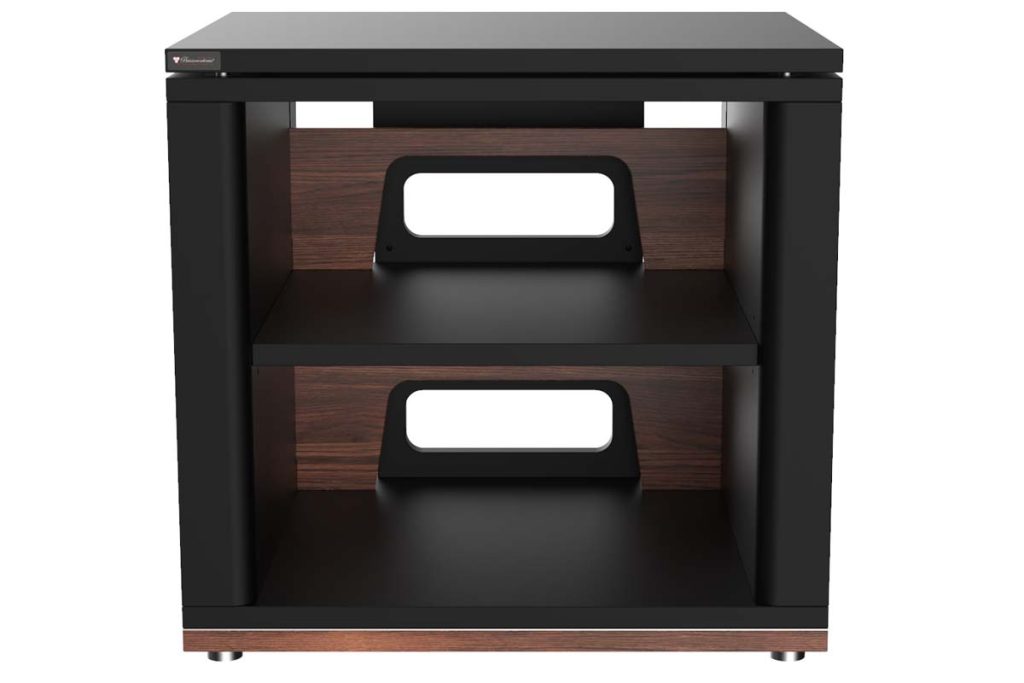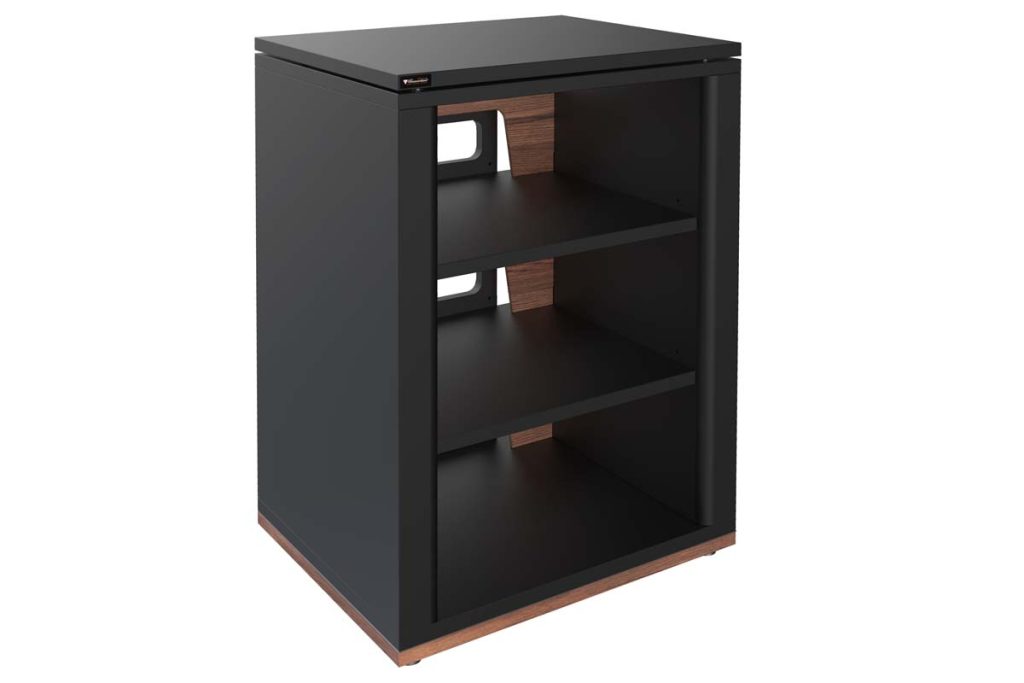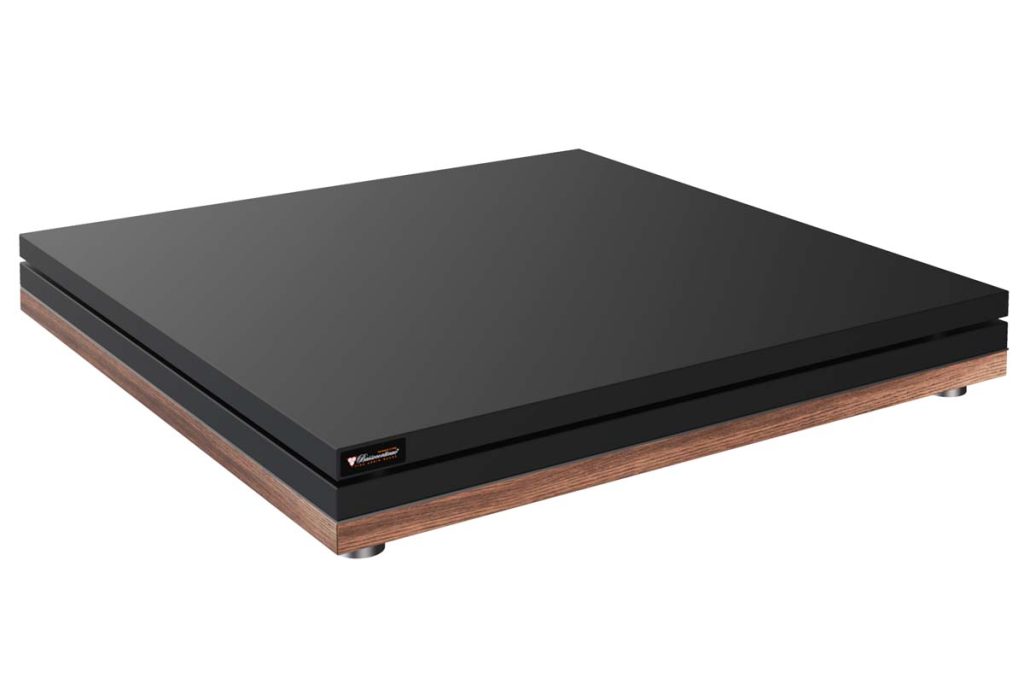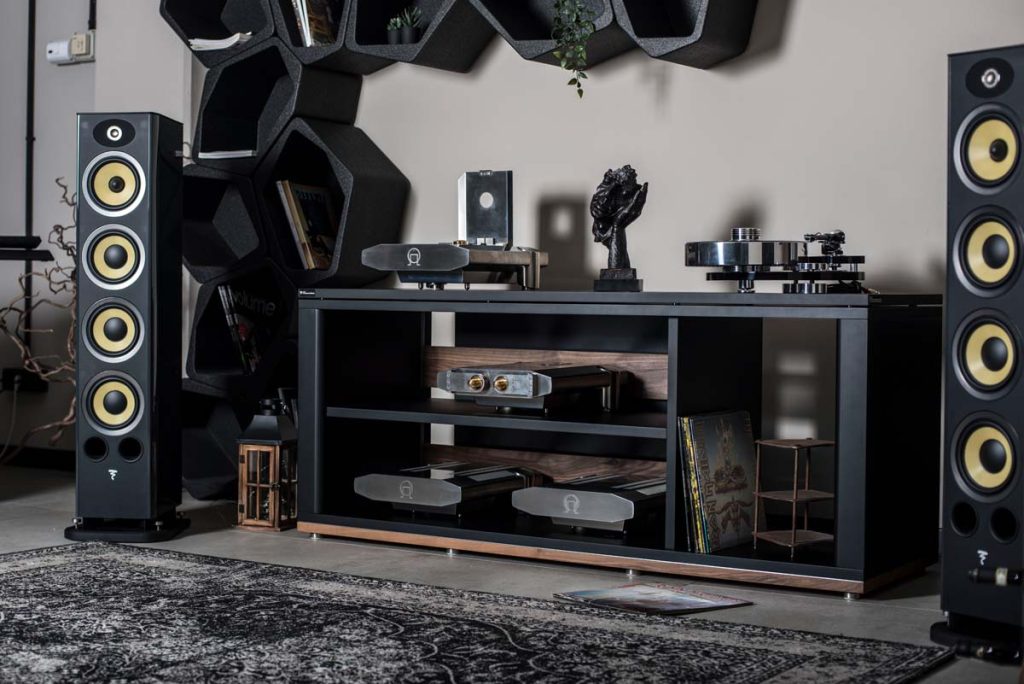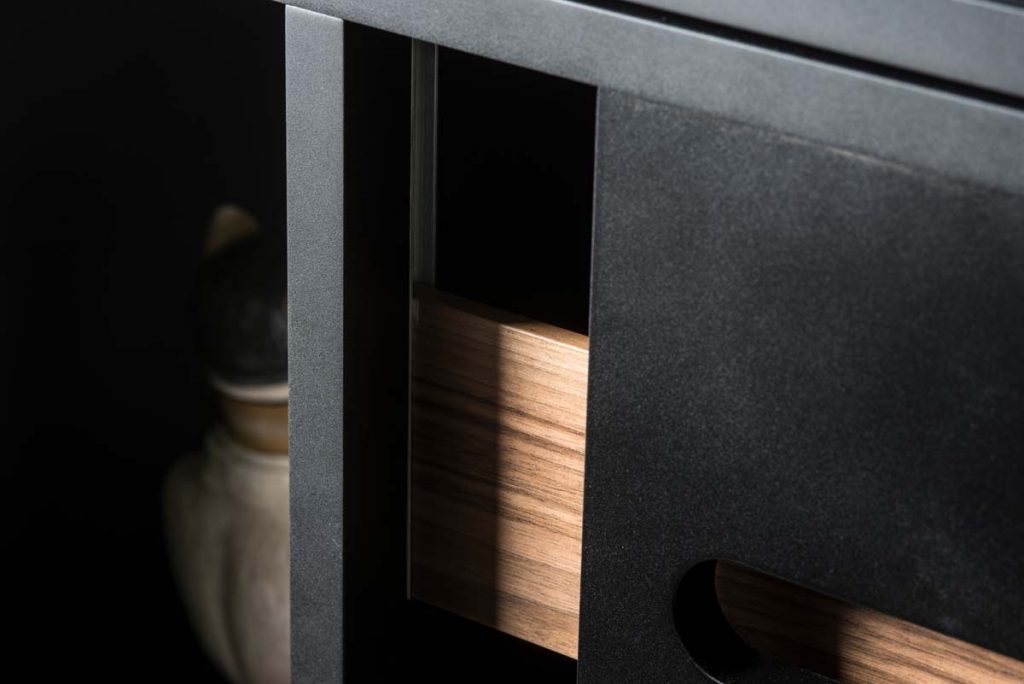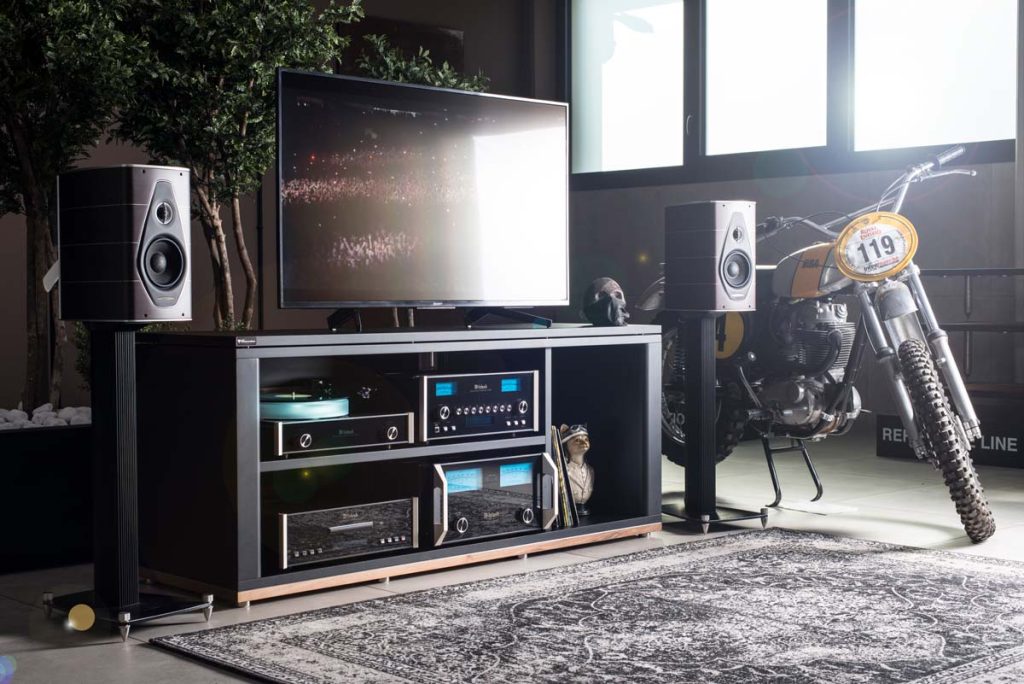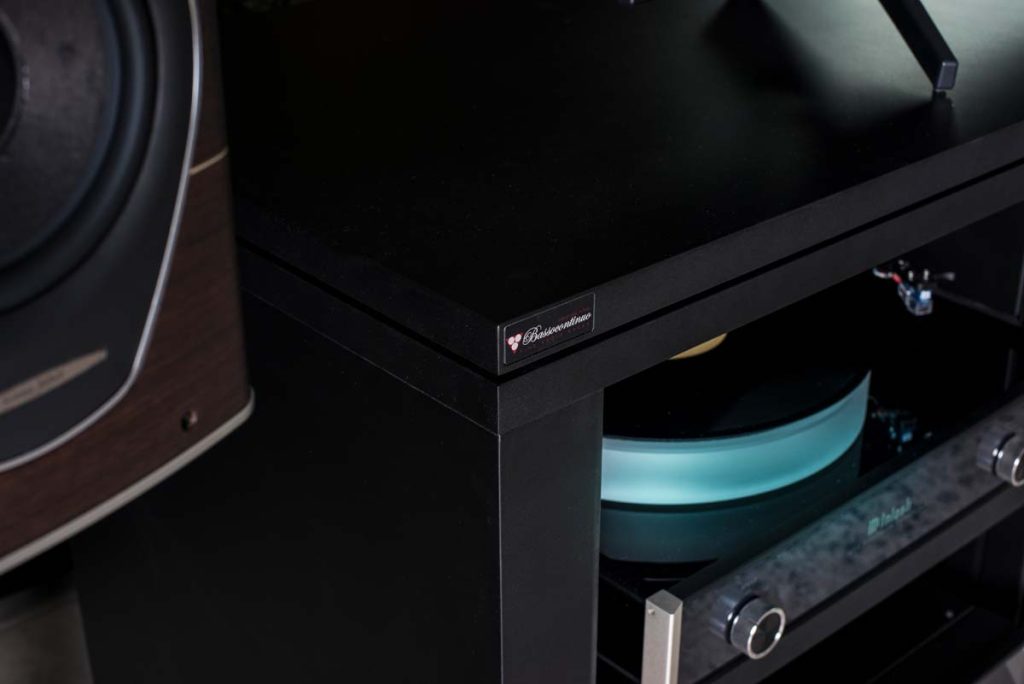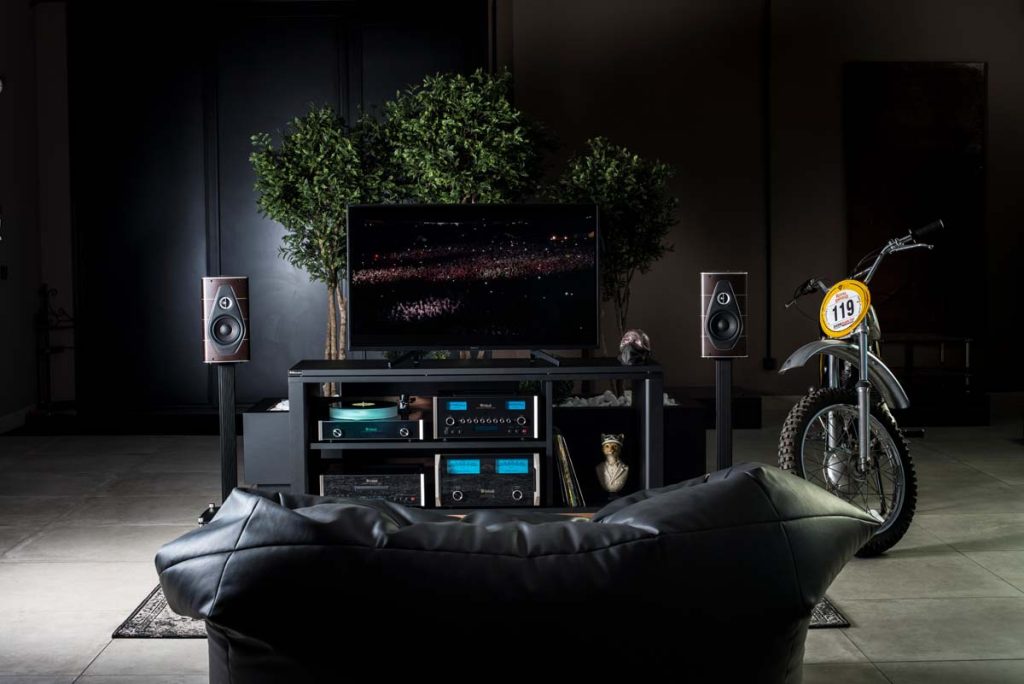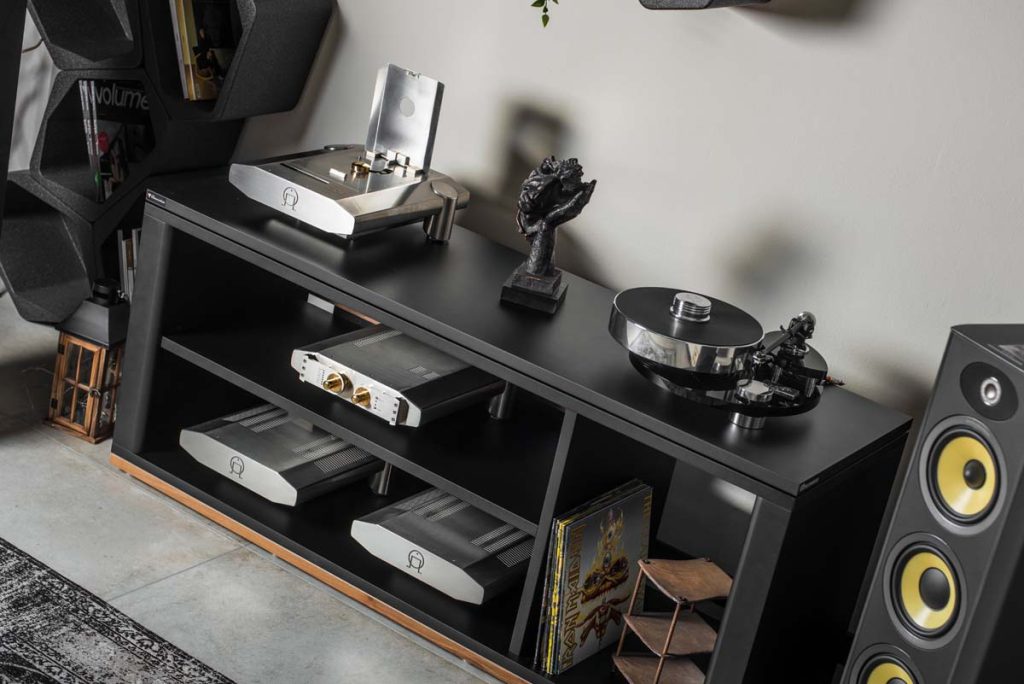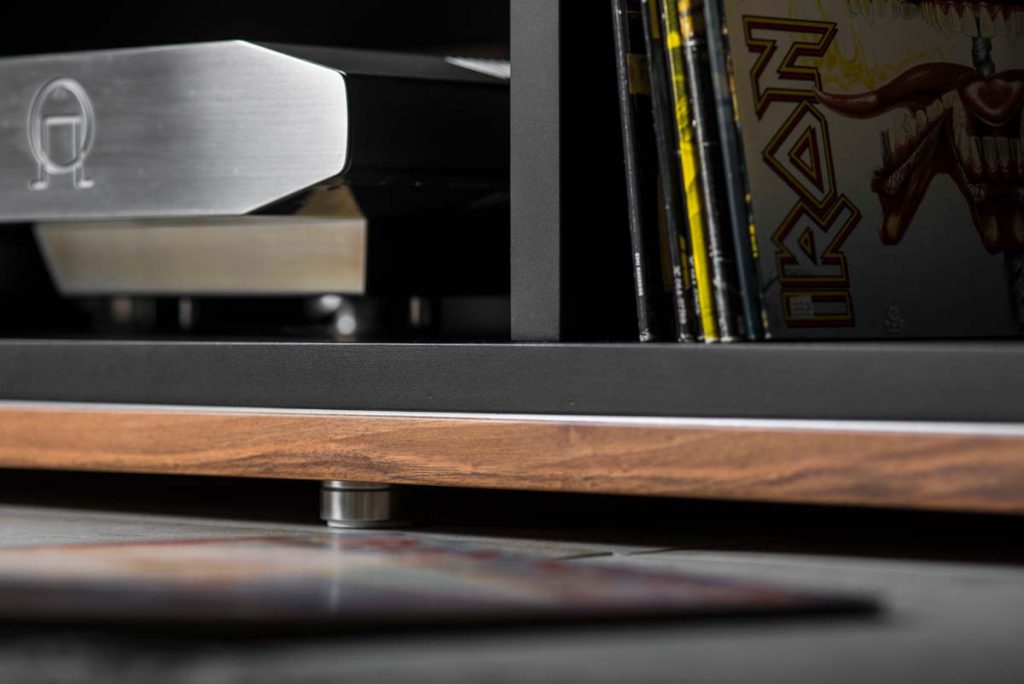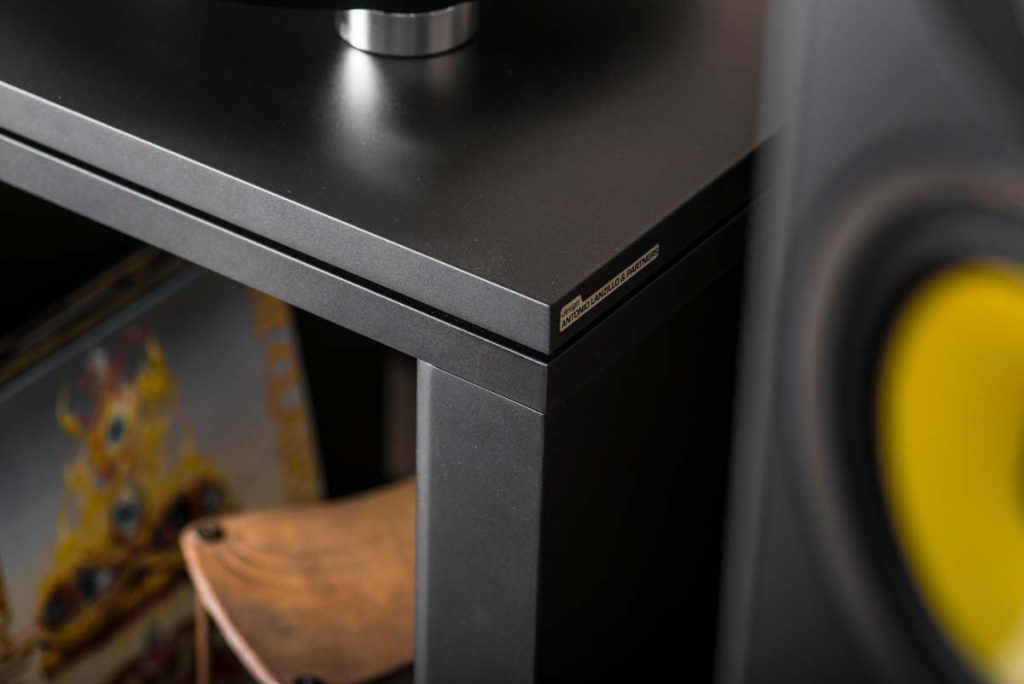Sonic performance or stylish living space friendliness? With the Zen Line, Bassocontinuo provides a bold answer to this age-old high-ender question: both!
“Technical Furniture” – in principle, you could readily use the term Bassocontinuo uses to describe the Zen Line Itabashi 3.0 to describe any HiFi rack. However, a quick glance at the object in question is enough to establish beyond any doubt that the focus here is clearly on the second part of the term. Of course, almost all rack manufacturers strive to make their sophisticated constructs at least visually acceptable, ideally even beautiful – but ultimately they usually can’t or won’t hide the fact that form follows function. Accordingly, highly polished spikes are proudly displayed, technocratic-looking, vibration-absorbing or damping frameworks are dressed in noble lacquers and veneers as visual eye-catchers. The design approach is clear: Since a hi-fi rack will inevitably draw attention anyway, it should at least do so in a positive sense and appropriately set the scene for the hi-fi gems placed on it.
This is a perfectly valid approach – after all, the presentation is half the experience. However, far from everybody feels this way – and I’m by no means only talking about significant others. Apart from your classic, equipment-enamoured hi-fi enthusiast there’s also the lifestyle audiophile who just wants excellently reproduced music in within his four walls without being distracted by the technology behind the playback.
Enter the Zen
This is exactly the type of listener Bassocontinuo caters to with its Zen Line. The Itabashi 3.0, which currently resides in our listening room, doesn’t look like a rack at all, but would be much better described by the term “sideboard”. Sources, DACs and amplifiers are not shown off in this rack – rather, they blend discreetly into the style of the landscape that is the living room and become an organic part of the whole to which they contribute, without pushing themselves into the limelight.
If you now get the impression that we are dealing with nothing more than a noble piece of furniture that sacrifices sonic performance on the altar of a contemporary stylish look, I can tell you that these worries are unsubstantiated: Bassocontinuo wouldn’t be Bassocontinuo if they hadn’t fitted their sound furniture with a sound-optimizing secret or two. For example, the two-part feet are equipped with Teflon damping discs, and when you lift off the top plate, you’ll discover the Torlon beads sitting in metal recesses underneath, which decouple the upper level from the rest of the rack to provide ideal working conditions for CD players and turntables. All the technical tricks that help high-quality components achieve top sonic performance are by no means conspicuous by their absence here, but are hidden quite modestly in a design that is thoroughly geared towards straightforward, no-frills elegance.
While browsing through the Bassocontinuo catalog, I also noticed something quite unexpected: Even though our test model Itabashi 3.0 appears like a monolithic piece and therefore does not even suggest a hint of modularity, the Zen Line is configurable to a remarkable degree. The width, number and type of compartments can essentially be freely selected and configured, with a selection of configurations available as standard models named after Japanese cities. If desired, any combination of compartment types and dimensions can be realized. Once this is done and the finished rack is placed in the living room, flexibility is admittedly at an end and the configuration is set in stone – but at least the height of the intermediate levels can be adjusted in three stages.
Beauty comes at a price
Our Itabashi 3.0 is a configuration in the wide AV format, which offers a decent amount of space: The lower and middle levels each offer room for two devices, and the top level can easily accommodate three. However, I can’t lie about the fact that populating the rack is a procedure that you won’t want to repeat more often than you have to. True to the spirit of straightforward simplicity that permeates every last detail here, the Zen Line teaches Japanese modesty not only to the components themselves, but also to all of the hi-fi cables, which like to be quite extravagantly designed: The cables are to be tucked away behind a walnut veneered trim panel that is part of the cable management system integrated into the rigid rear panel. And this is how you do it: Lift the trim with two hands, which reveals a gap in the rear panel for the cables to go through, then guide the cables through with your third hand. Ideally, the cables should already be plugged into their intended sockets before the component is pushed into the compartment, since once it’s placed, you can’t really see what you’re doing back there.
The reward for the effort is the visually dignified, refreshingly clutter-free end result. Once the equipment is in the rack, it stays there, you just sit back, enjoy the view and, above all, the music. The Itabashi makes no effort to cater to the passionate HiFi hobbyist who wants to try out a new set of interconnects every three months and it doesn’t need to, either – Bassocontinuo can confidently refer this kind of customer to all its other rack series.
Good looks are one thing …
… but is the Zen actually any good? To make it short: Yes, absolutely! Tom Waits’ “Hang on St. Christopher” (Beautiful Maladies) is carried by a mighty booming bassline; the Itabashi preserves the gnarly texture that the Aavik I-580 accurately traces here. Completely unbothered by all the low-frequency energy, the crisscrossing and buzzing elements of the distinctive Tom Waits sound design seek their respective places on the soundstage. The percussion instrument in the upper left corner, which sounds like a garbage can lid misused as a hi-hat, can fully develop its trashy, tinny tone as it decays and doesn’t degenerate into a dry, featureless clang, as quite often happens on this track when the setup isn’t on point.
What quickly became apparent during my listening tests: Mechanical source devices like CD players and turntables definitely belong on the top, decoupled via Torlon balls. With “Excuse me for livin'” by Oscar Brown jr. (Heaven and Hell) not only the exact placement of his voice in the center of the stage is clearly improved compared to the lower levels, but also the positioning of the accompanying orchestra is much more differentiated. The instruments stand more for themselves in space, and from this their sound combines with the singing to form a coherent musical event.
Conclusion
As soon as the play button is pressed, it immediately becomes clear that the Bassocontinuo Zen Line Itabashi 3.0 is much more than an audiophile fashion statement. The aspect of aesthetics clearly takes center stage, but by no means do the sonic merits fall by the wayside. With the Zen Line, Bassocontinuo enters a niche that is, in my eyes, a gaping hole in the market and offers something that many audiophiles have long desired: the perfect stealth rack.
Accompanying Equipment
CD-Player: Ayon CD-3x, Audio Note CD 1.1x | Network player/DAC: Cambridge Audio CXN V2, Lumin X1, Soulnote D-3/X-3 | Pre-/power amp combo: AVM streaming DAC SD6/8, MA8.3 monoblocks | Integrated amplifier: Aavik I-580 | Loudspeakers: Børresen Z5 Cryo, AudiaZ Cadenza, Wilson Audio Sasha DAW | Racks: Solidsteel, Creaktiv | Cables: AudioQuest, Viablue, in-akustik, Audioplan
HiFi-Rack
Bassocontinuo Zen Line Itabashi 3.0
Concept: living room friendly hi-fi rack allowing for various configurations | Construction: plywood construction, adjustable steel feet with decoupling teflon discs, top level decoupled via Torlon balls | Dimensions (W/D): 160/50 cm | Usable shelf space: top level 160 x 50 cm, middle and bottom levels 110 x 50 cm | Height between the levels: 45 cm | Weight limit: bottom level 150 kg, middle and top level 100 kg | Warranty period: 5 years | Price: around 7900 €
Audio Reference GmbH
Alsterkrugchaussee 435
22335 Hamburg
Phone +49 40 53320359

